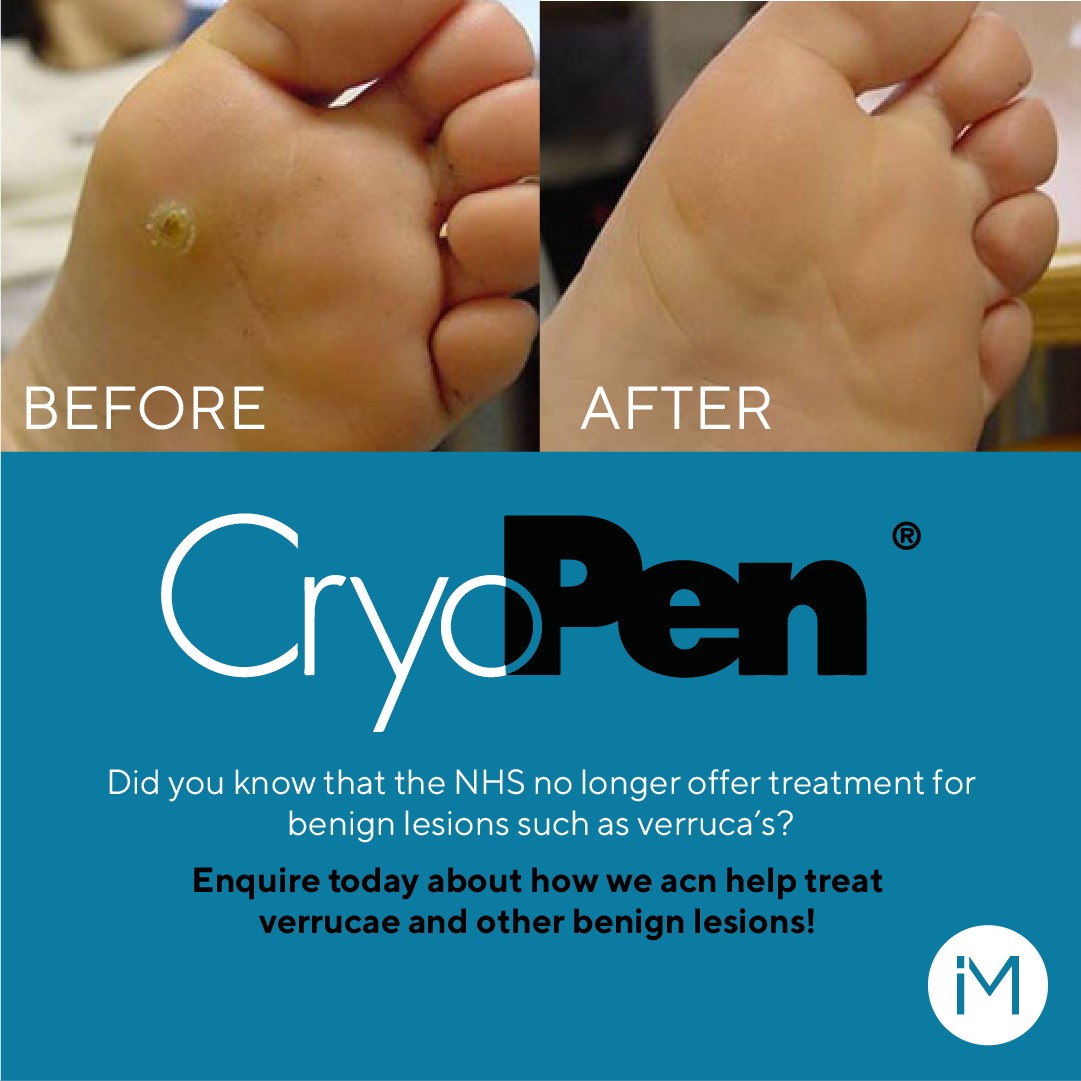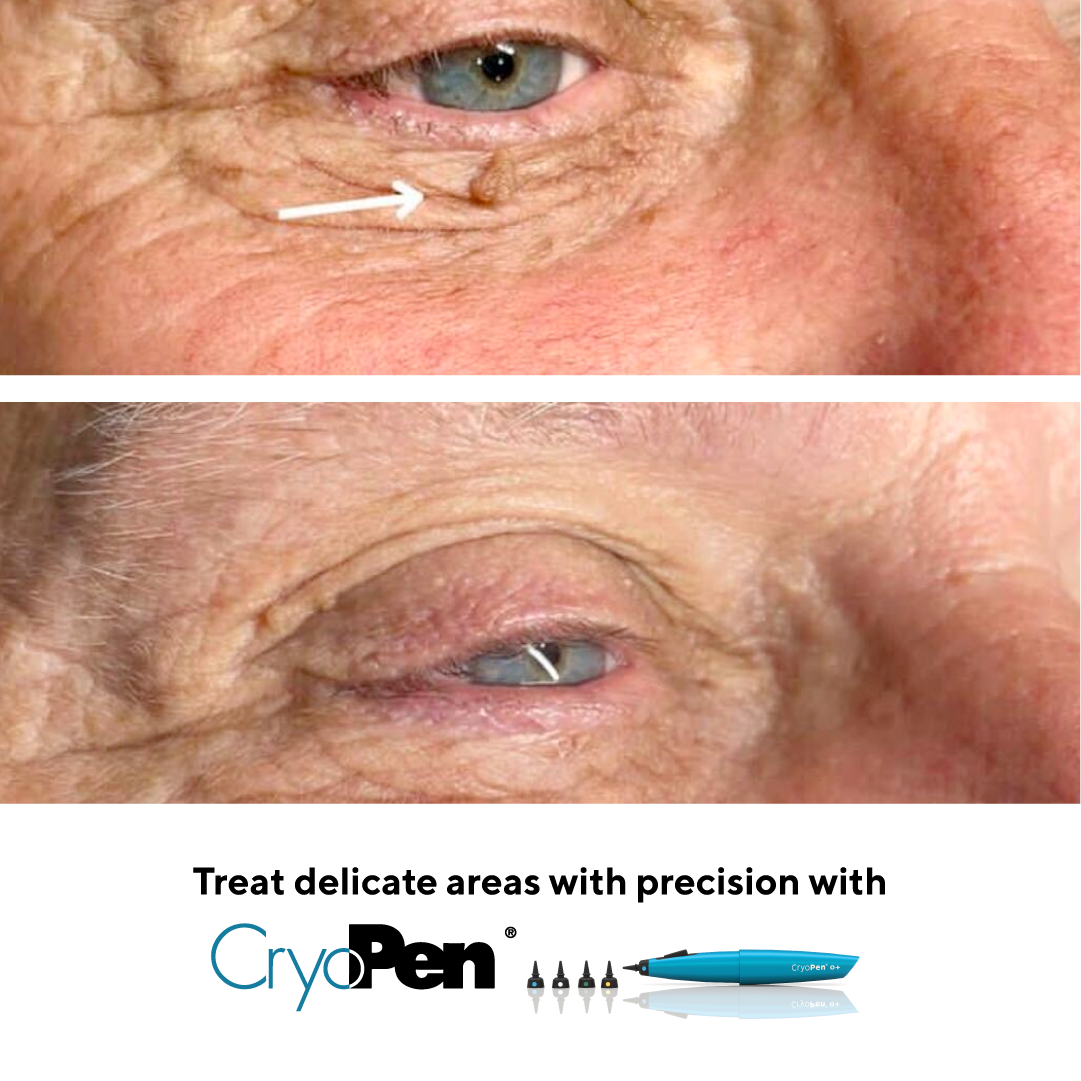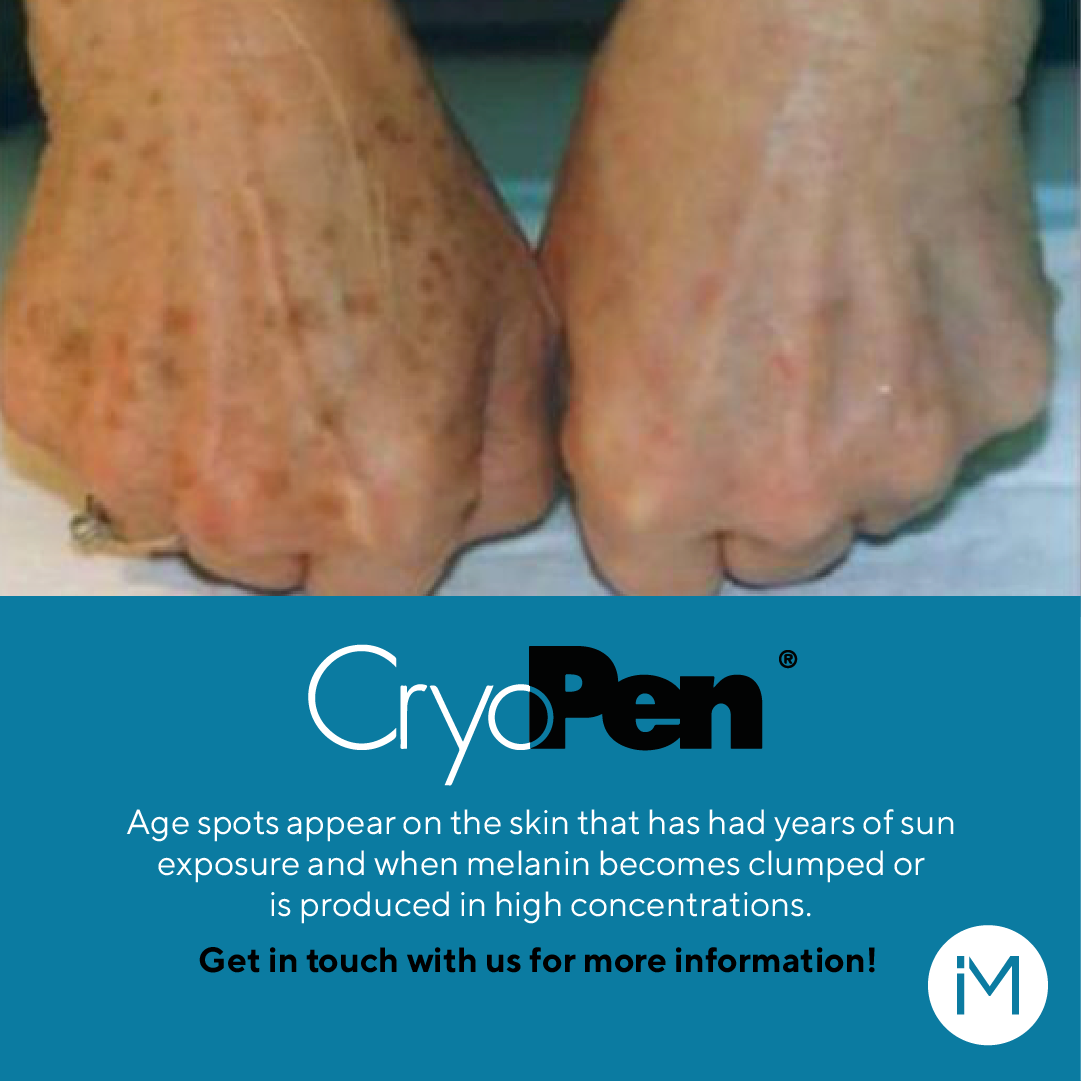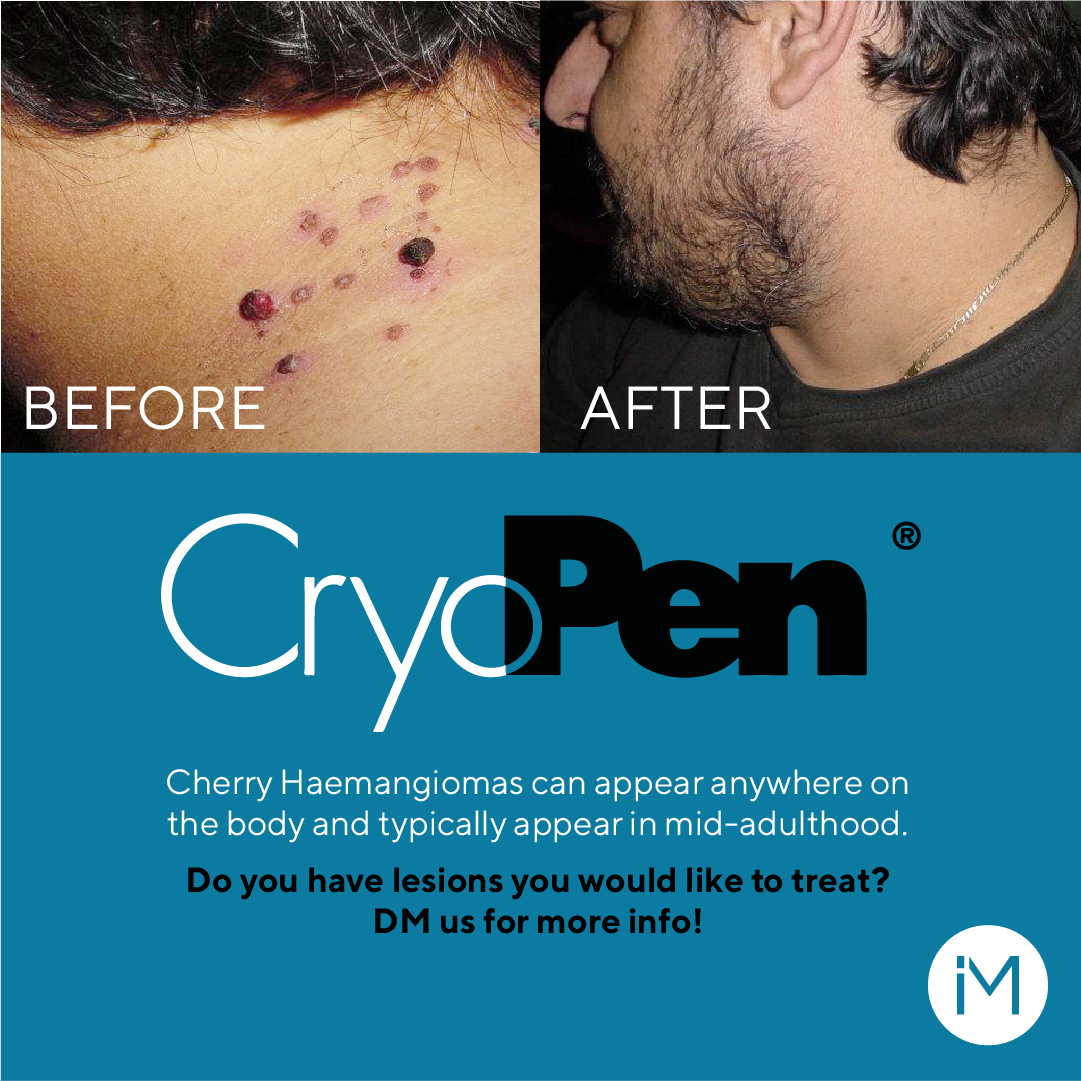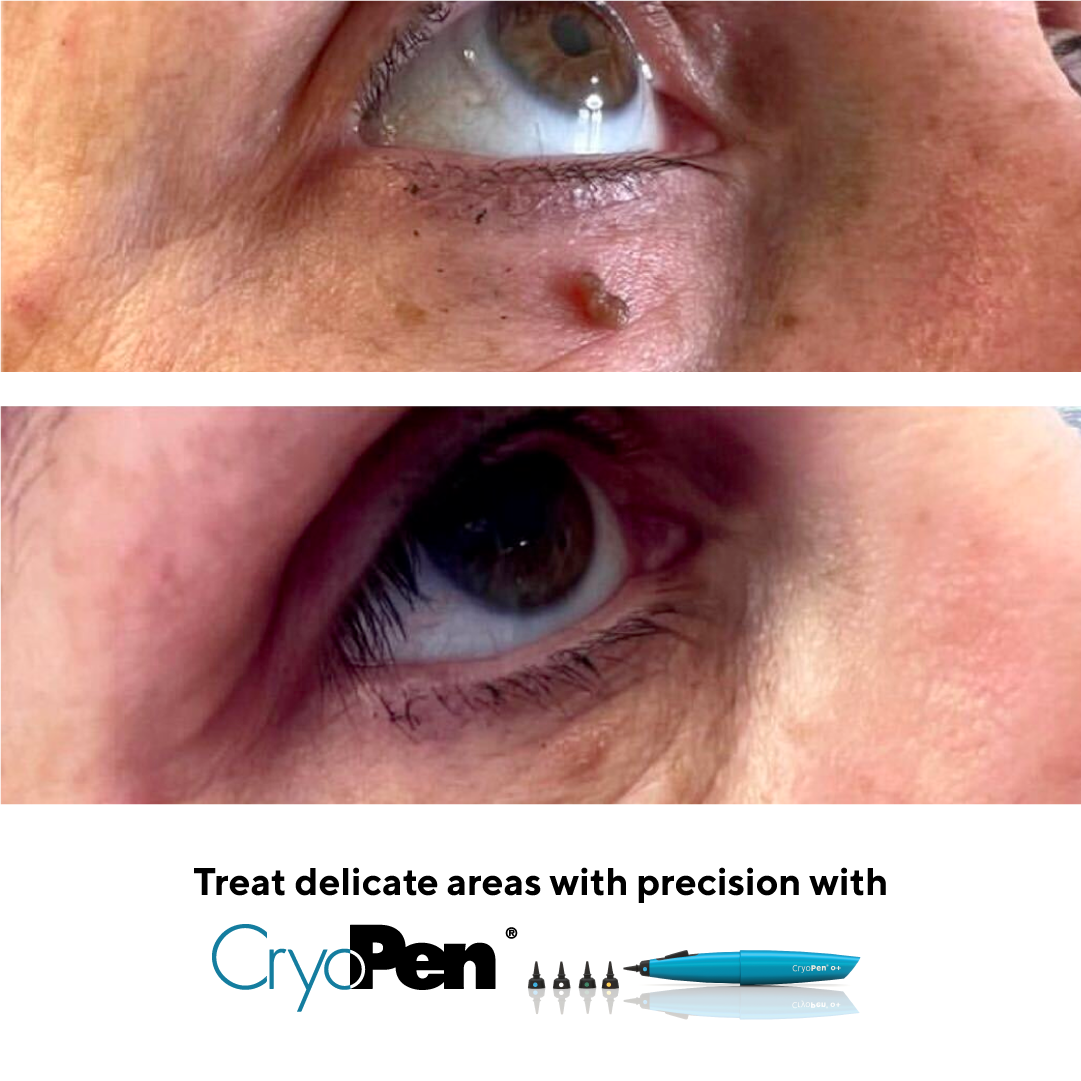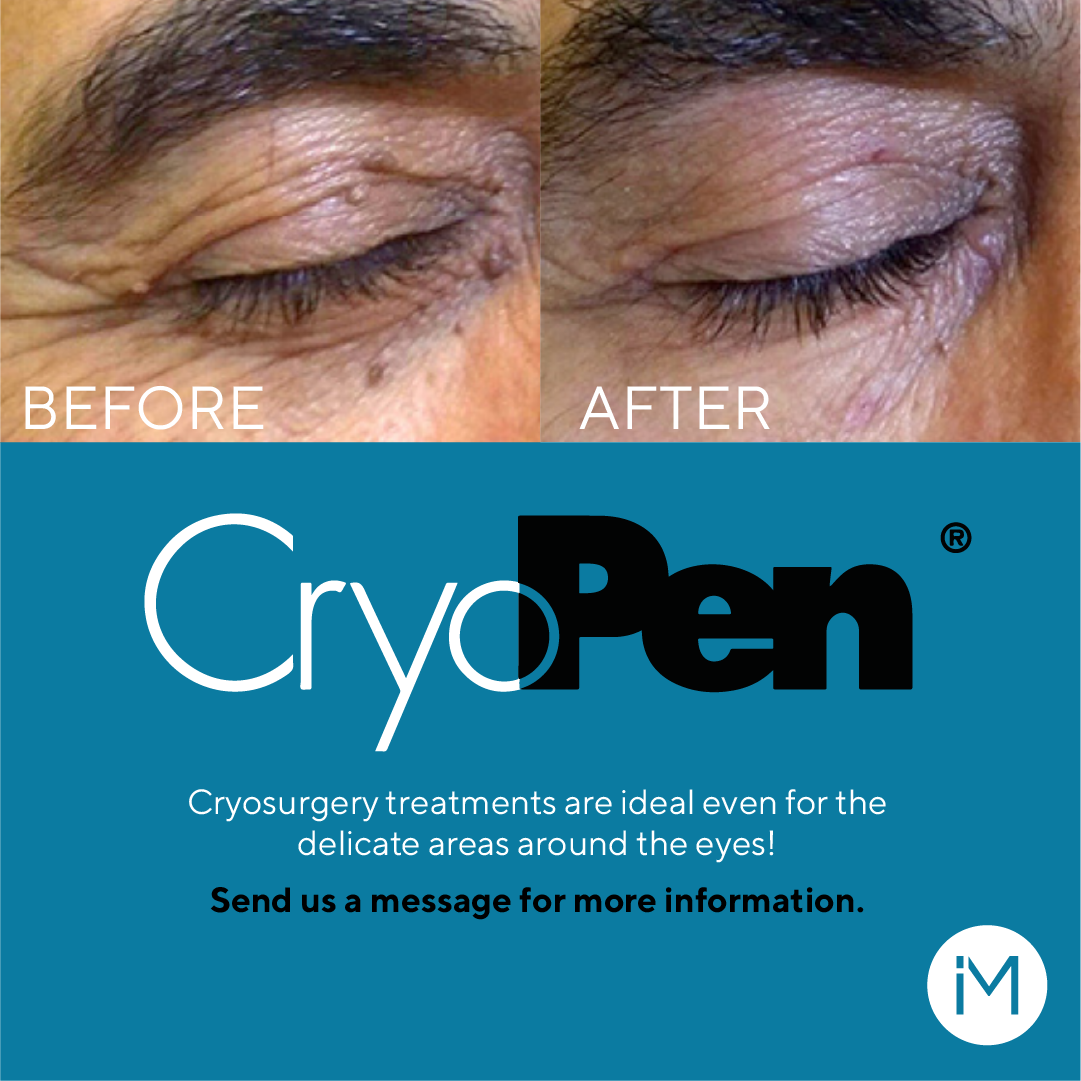
Cryo Pen Treatment
Cryotherapy or Cryosurgery is a highly effective and safe procedure that is used to freeze and destroy benign skin lesions.
It uses liquefied nitrous oxide to destroy the tissue by freezing the cell fluid which in turn forms ice shards that rupture the cell membrane in turn destroying the cell and the lesion.
Cryotherapy is beneficial as it is quicker than other treatments and patients can be in and out in seconds. It requires no anaesthesia and has minimal scarring. There are no limitations on activities (except protecting the area from damage or abrasion) and patients can return to normal activities after treatment(s).
FAQ
-
Yes. However, skin types and location should be considered carefully prior treatment.
-
Both hypopigmentation and hyperpigmentation may occur after cryotherapy, generally last a few months, but can be longer lasting. Please ask your practitioner about this before treatment.
-
Melanocytes are the most sensitive to cold injury. Therefore, they are the most easily damaged with cryotherapy. Dark-skinned patients need to consider the risk of permanent loss of pigment.
-
Generally, little or no discomfort is experienced during the first few seconds when you manage to avoid treatment of healthy tissue.
-
Item descriptioAt a penetration rate of 1 mm per 5 seconds, the ice will reach the caudal extent of the lesion after a given amount of time related to the depth of the lesion. From that moment the patient will experience a pain sensation. This may be the moment to stop treatment. There might be a little residual stinging for a few minutes after treatment.n
-
Typically, it leaves the least amount of scarring of any form of lesion removal because it causes the least damage to the connective tissues. Hypopigmented lesions will be noticeable until they darken.
-
Occasionally, a blister might form and persist for up to 5 days. After, it scabs over the lesions, healing depends on how deep the wounds is. Typically, healing will occur from 2-6 weeks, depending on the length of freeze and location.
-
Most lesions will respond to a single treatment. However, some deeper lesions may take several aggressive treatments to get results.
-
For most lesions, cryotherapy is a permanent removal. Some lesions are harder to remove than others.
-
There are no limitations on activity except to protect the area from damage or abrasion. Swimming and showering are not a problem.
-
If the blister pops, the use of an antibiotic cleaning solution and ointment is recommended.
Covering the area with a bandage also promotes healing.
-
Follow-up should be scheduled in 2-week intervals to observe results, and for further sessions if required.



